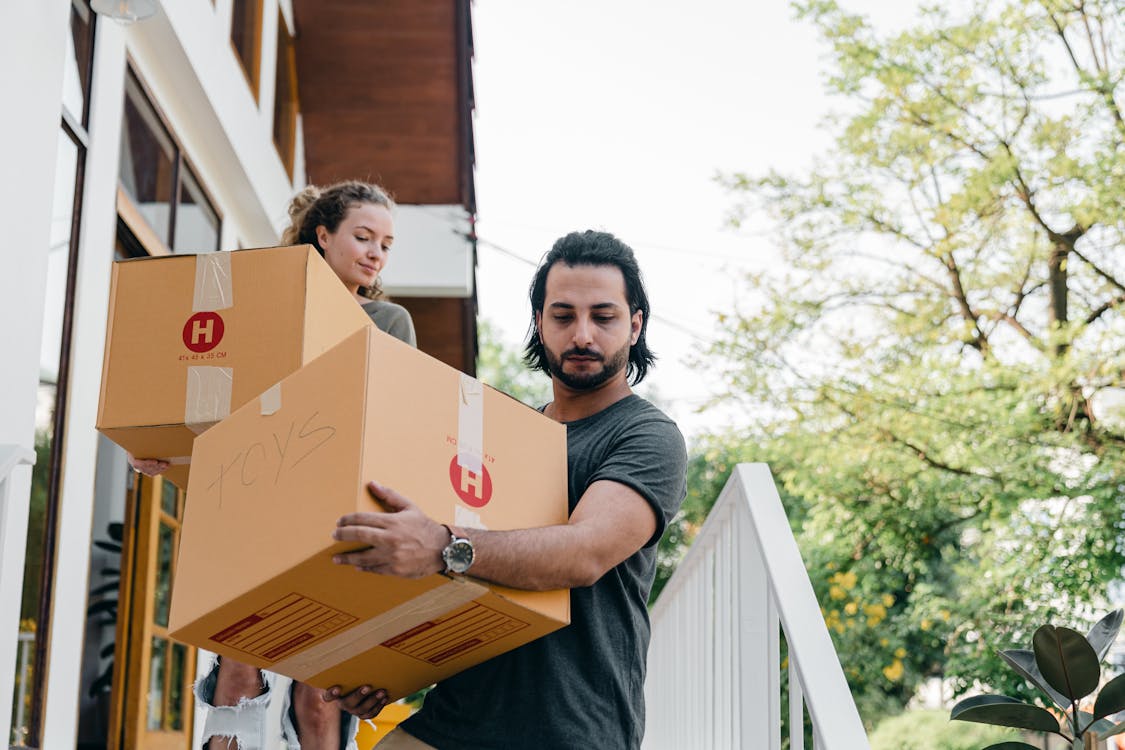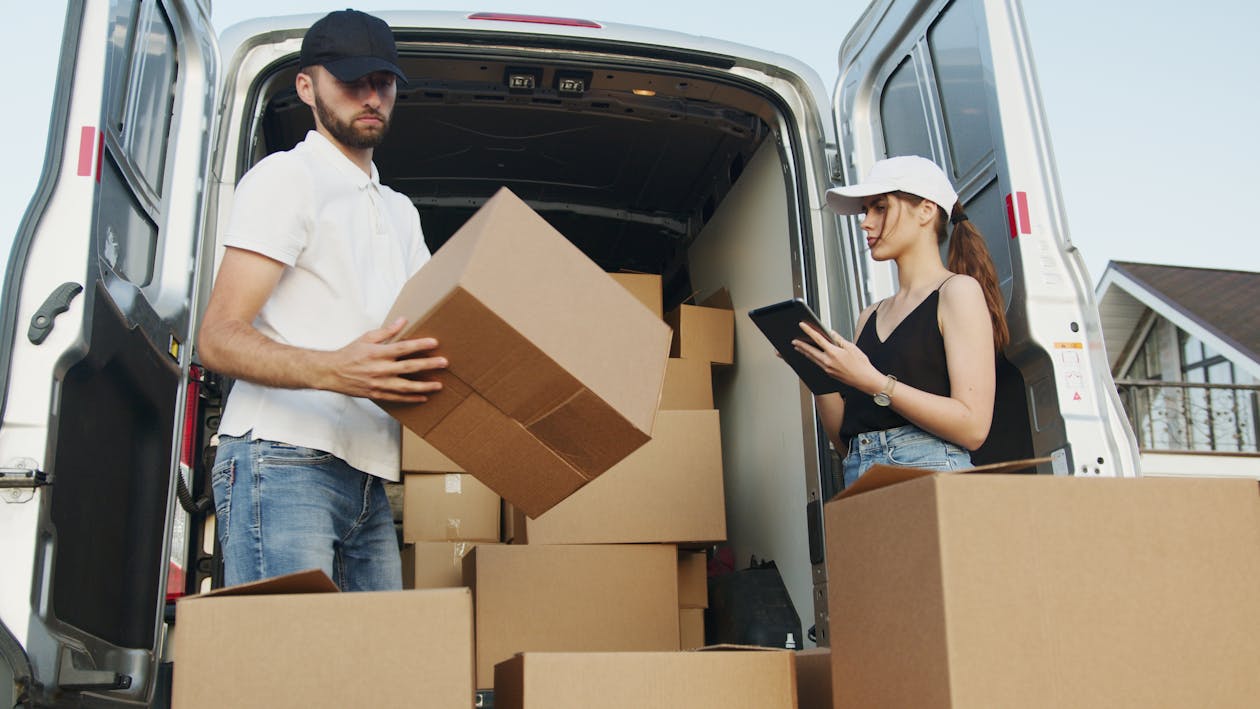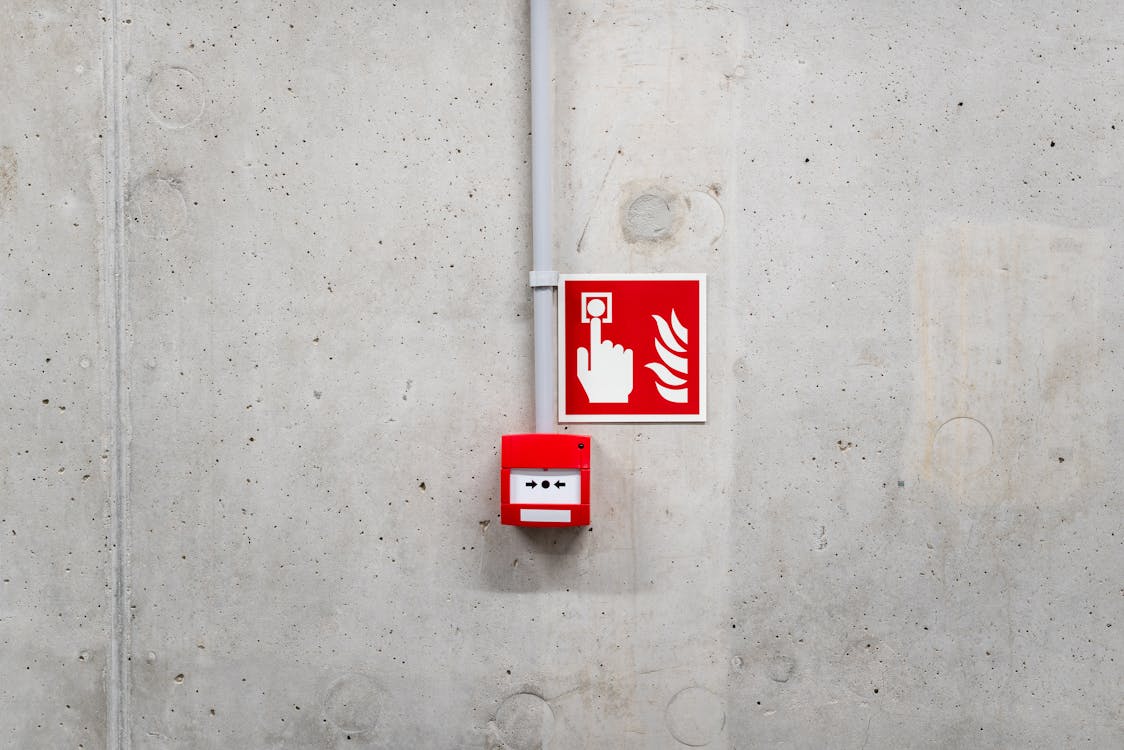The Ultimate Guide to Moving
Thursday, July 11, 2024

By Rachael Westgate for REALTOR.ca
Finding a home, hiring a mover, officially moving in: there are many portions of the home buying process to manage simultaneously, and numerous small details that are easy to overlook. Juggling all of the moving pieces can feel overwhelming, especially when factoring in family, pets, and everything in between!
Whether your next move is to rent or to purchase, below we outline key considerations to help make your relocation experience as seamless and stress-free as possible.
In this article, we’ll cover:
- How a REALTOR® helps from the beginning
- What should I include in my moving timeline?
- How can I prepare my home for a move?
- How should I pack for a move?
- What happens on possession day?
- Where and when do I update my address?
- Tips for moving without a moving company
- Tips for hiring movers
- What to consider when moving to a condo building or strata
- What to consider when moving to a detached home
- What should I do first when I move in?
- Tips for a seamless move

How a REALTOR® helps from the beginning
How a REALTOR® helps from the beginning
No matter where in the country you’re looking to call home, REALTORS® are available to help you on your journey. The benefits of working with a professional during your home hunt—whether you’re buying or renting—are significant:
- They’re experts in the local real estate market and will be able to make recommendations on neighbourhoods as well as provide insights into pricing trends.
- They are locally based and can support inter-province or international moves, so you don’t have to commit to a place sight unseen.
- They will advocate for you during negotiations and walk you through the necessary paperwork.
- They have extensive access to all the newest for sale and rental listings, and benefit from a vast network of colleagues in your target area.
- They support you with the various emotional decisions that accompany a move and can recommend great service providers to ease your transition.
The true value lies in “working with someone who knows to what extent you can be creative in a contract, allows buyers to negotiate items, repairs, or additional terms they may not have known to include if going at it alone. Everyone’s needs are different, and every home is different. REALTORS® can tailor purchasing contracts to align with these unique elements.”
If you’re interested in exploring new listings, REALTOR.ca has the most up-to-date list of properties for sale and for rent in Canada.

What should I include in my moving timeline?
Once you’ve chosen your new home location and completed the paperwork, it’s time to start creating your moving timeline. While each timeline will look different, there are many questions you should ask yourself. Consider creating a timeline that starts with your moving day and also highlights:
- What day and time do you get possession of your new space?
- What day and time do you have to vacate your current home?
- If renting, when do you need to give your landlord an end of tenancy notice?
- What days would you like a moving company or friends to help you?
- When should you have all of your packing complete? (Pro tip: you should give yourself about a week to pack!)
- When do you need to purchase all of your packing supplies?
- When should you start decluttering?
- If moving to a condo building or strata, when do you need to reserve the elevators/pads/parking by?
- What is your plan for caring for pets and children during the move?
- What is your move-out cleaning requirement? When will you clean?
- How many days (if any) would you like to book off work for the move?
- If you have to travel for your move, when will you arrive in your new neighbourhood? What arrangements are needed in advance of the move?
- When will your utilities transfer?
- Do you need to transfer any other services, and when?
- Who do you need to notify of your new address?
Once you have answers to these questions, populate your timeline, ensuring you give yourself enough lead time to complete each task before the big day.
TIP: If you’re purchasing a home but your closing dates don’t align with the final dates in your previous home, keep in mind that you may need to consider interim rental and storage accommodations.

How can I prepare my home for a move?
One way you can save headaches (and backaches) during the moving process is to get rid of items that aren’t serving you anymore or you won’t have space for or won’t use at your new home.
Tackle decluttering about six weeks before your move. A three-pile method lets you separate things you want to throw away, sell, and donate as you work through each room. Depending on your current home and neighbourhood, you can set up a yard sale or sell used items on Facebook Marketplace or another online resale platform.
TIP: Take measurements of the room dimensions in your new space so you can plan whether your larger furniture will be able to fit through small door frames, or if you’d prefer to deconstruct or sell and repurchase smaller options.
Next, you’ll want to purchase, borrow, or rent all the packing supplies you’ll need for the move. Think tape, bubble wrap, markers, and specialty boxes like dish barrels or wardrobe boxes. Consider packing some of your lesser-used items while you’re decluttering so you can purge and pack as you go.
TIP: Looking for free boxes? Check out the cardboard recycle bins behind grocery stores or department stores! Boxes of all shapes and sizes can be found here and re-used for your move.
Food can add extra weight and bulk on moving day. Think about a move-ready meal plan to help eat up fridge and pantry items.

How should I pack for a move?
As a general rule of thumb, rooms or items that are used least often should be packed first. Labelling boxes with the name of the room they are destined for (and whether they’re heavy or fragile) helps tremendously when moving and unpacking. Make sure to put the label on both the top and sides of the box in case something is stacked on top!
Rachael Cronk of Provincial Moving & Storage on Vancouver Island shares additional packing insights.
“Let’s say you have a two-bedroom home and you’re moving into a three-bedroom home; now the purpose of your items is changing,” she explains. “That third room may become a gym. Mark the box coming from, say, a bedroom, with the label ‘gym’ to tell the movers where to place it.”
If any items are of special sentimental value or cost, make a note of these and let your moving helpers know to take extra care when transporting them.
- Linens and pillows (and any other light items): larger boxes or bins
- Books, paperweights, and heavy decor: small boxes (so they don’t become too heavy to carry)
- Liquids: totes with secure lids
- Dishes and china: small to medium-sized boxes, stacked vertically and wrapped in a layer of bubble wrap, packing paper, or cloths from your kitchen
- Clothes: wardrobe boxes (or laundry baskets or garbage bags!)
- Lamps: remove the lightbulbs before packing lamps and lampshades in boxe
- Tall items: wardrobe boxes
- Art and mirrors: specific picture and mirror transportation boxes come in a variety of dimensions
“The bigger computer items like printers and monitors, people forget to pack,” Cronk says. “I always tell clients that everything has to be packed—even your brooms and mops. Lamps are also a big one. People have table lamps and floor lamps, and you can’t just place them into the moving truck. They’re often made of glass and can easily break, so you have to put them into a box, blanket wrap them well, and then put them on the truck.
“Sometimes people forget to pack their fridge and freezer contents. They’re just so in the moment of moving. Choose a bin with a good quality lid to make sure it really snaps on, because the risk of putting anything in a moving truck with opened lids is that it could spill on boxes or furniture in the truck.”
TIP: Be sure to pack an open-first box with all the essentials for your first couple of nights in your new space, so you’re not stuck searching through all your belongings after an exhausting move.
If packing feels daunting to you, consider hiring a professional organizer or a moving company that offers packing services.

What happens on possession day?
When possession day arrives, whether you are renting or buying, it’s cause for celebration! Possession day is when you can officially call the space your own, and begin moving things in.
As a seller, you’re more than likely required to give your keys to your REALTOR®, clear out all possessions, and ensure the space is cleaned. In certain instances, you may have negotiated to leave some items behind for the new owners. These are called “included items,” and would be agreed-upon and detailed in your contract of purchase and sale. If it’s not an included item, it needs to leave!
As a buyer, you’ll officially receive the keys to your new home! It’s important to ensure you and your REALTOR® walk through the property to confirm that all included items or pre-possession maintenance and repairs have been fulfilled. If you’re purchasing a new build, you will do a deficiency walk-through one to two weeks before possession.
As a renter, you can officially occupy your new leased space! If you’re moving out of a rental, you must clean your space and do a final walk-through with your landlord, or identify repairs that will need to be done. When moving into your new space, you should do an initial walkthrough with your landlord to flag any pre-existing damage, and note it on your tenancy agreement so you aren’t liable for those issues when moving out.

Where and when do I update my address?
Different services will require your updated address leading up to the move. To break up the administrative burden, consider tackling a small group of contacts each week leading up to moving day.
Six weeks out, notify your home or tenant insurance provider of the move and shop around for insurance rates for your new home. This is also a great time to let any regular home maintenance service providers know of your upcoming move and cancellation of services ( gardeners, house cleaners, etc.).
Four weeks out, submit a change of address form and set up mail forwarding with Canada Post. This is also when you should notify your utility providers of your change of address. These utilities include your electricity provider, fuel company, and internet, cable, and phone line providers.
Two weeks out, begin the process of notifying all other organizations of your new address, including your bank, schools, employer, your doctor, charities, etc. Institutions that have records on file, including schools and medical offices, will need to forward your documents to your new providers.

Tips for moving without a moving company
Moving without hired help can be intimidating, but with the right tools, preparation, and friends or family who are willing to lend a hand, the experience can be seamless and even (dare we say it) fun!
- Identify roadblocks: From weather conditions to steep driveways, congested roadways to multi-floored homes, map out any potential roadblocks that may make moving your items into your new home challenging, and plan for support or backup plans where possible.
- Confirm transportation methods: Depending on the size of your new space, you may need to rent a trailer, van, or truck for your moving dates. Assess your comfort level and manoeuvrability with different vehicle types and plan to reserve a vehicle with a pickup and drop-off location that is close by to save you time and money. You should also look to make sure your licence allows you to drive this type of vehicle.
- Consider renting a storage unit: This may be helpful for the first few months in your new space if you’re interested in moving in smaller, more manageable phases. Seasonal and less frequently used items can be transported to the storage facility weeks in advance of the move, so your moving day is more manageable.
- Acquire the proper equipment: Furniture sliders, straps, and different-sized dollies can make all the difference when moving on your own. The physical strain on your body can be significant, especially when moving heavy items, so equipping yourself with the right gear is critical. Pads, blankets, boxes, and bins will help preserve your possessions during transit.
- Give yourself plenty of time: An early start provides you with as much daylight as possible to make your move less rushed, which can prevent unwanted injuries or damage to your possessions. Give yourself the entire day or, if possible, the weekend to transition into your new space.
- Ask friends and family: It’s not the most glamorous of tasks, but many hands make light work. Entice them by providing food and refreshments for the big moving day.
Tips for hiring movers
Hiring a moving company will help to make your moving experience faster and less physically demanding on you and your helpers. When hiring a moving company, it’s important to shop around and ask questions to determine which business will best suit your needs.
Cronk recommends asking some key questions.
“Do they have proper insurance in place? This ensures that if something is damaged during the move, they are covered. You should also ask if they have WorkSafe insurance so you can’t be sued for someone getting injured on your property,” she explains. “Asking about the size of the truck is also really important. Some moving companies have one-ton, three-ton, or five-ton trucks. Smaller trucks can, of course, only do smaller moves.”
It’s also important to ask about mileage restrictions, and included equipment and services when booking movers, as these may vary.
“We offer clients our wardrobe and picture boxes for the day of the move. They’re really expensive, so we lend them out for free. Some other moving companies don’t do that, while others do.”
It’s also important to know what your movers can’t and won’t transport. Things like:
- oil-powered machinery with oil inside;
- corrosive, flammable, toxic or prohibited items;
- plants;
- open liquids;
- pets; and
- items of extraordinary value (without proper insurance and an appraisal).
While moving companies may not be able to take these items in their trucks, movers can pack them into your vehicle so they’re easier to transport on moving day.
TIP: Help your movers out by ensuring there is a designated parking spot where the moving truck can easily access the home to move oversized items in and out. Be sure pathways are cleared and sanded or salted in the winter.
Once your movers have completed the delivery, sign the bill of lading, which details all the inventory moved, and keep a copy for your records.

What to consider when moving into a condo building
If your former or new home is part of a condo building, your property manager will be a key point of contact during your moving preparations. Each building’s moving procedures vary, and knowing the process and requirements for your unit will be crucial during your move. Ask for a breakdown of the regulations once you know your moving timeline, so you can prepare yourself for the weeks to come.
For movers, it’s important to know where the moving truck is allowed to park, how many elevators are in the building, and whether those elevators can be booked. Are there any other procedures the moving company should be aware of? If so, send them along to your movers in advance of possession day.
“For example, there are specific buildings in Victoria that do not allow the front door to be propped open so movers can come and go, therefore the residents have to hire someone or find a friend to open and close the door for the moving staff,” shares Cronk.

What to consider when moving into a detached home
Previous and future floorplans are the most important elements to consider when moving into a detached home. For homes that are multi-level, the number of staircases and the total square footage will inform how many movers you’ll want to book, and for how long.
You’ll also want to measure door frames and stairwells in advance to ensure your furniture will fit. Otherwise you may end up like Ross, Rachel, and Chandler in Friends having to “PIVOT!” Have a plan in place in terms of where you’d like things to go before you start moving to avoid relocating the same bed frame four or five times.
“It’s so helpful to create signs that say office, gym, bedroom, etc., to place on the doors in the new space, and then label the boxes to match,” Cronk explains. “At the new home, our movers have never been there and won’t know what room is intended for what. When the sign is on the door, it’s so easy.”

What should I do first when I move in?
From meeting the neighbours to exploring the area, setting up your bed to celebrations, what should come first once all the boxes are moved in?
Your moving day survival guide may vary slightly depending on where, how and at what time of year you’re moving but, no matter what, there are a few things you should do during your first few nights in your new space.
Whether you’re renting or buying, it’s important to inspect your new space for damage, deficiencies or missing items that were agreed upon in your contract when you first arrive. If you’re renting the space, take pictures of the unit as-is and send them to your landlord/keep them on file so you both agree upon the state of the space when you moved in.
Checking the smoke and C02 detectors comes in a close second. For next steps, read this article on what to do first when moving in.
After a night or two getting acquainted with your new space, complete your new home checklist to ghelp you get organized and settled.

Tips for a seamless move
These tips will make relocating to a new home even more seamless!
- Book time off: Request a day or two off work to focus on the move and unpacking.
- Arrange for a house cleaner: Take the burden of cleaning your previous home, your new home, or both off your to-do list by booking a cleaning service.
- Take photos of your electronics: Reconnecting electronics can be frustrating after a long moving day. A picture of the back of the TV, computer, or receiver to indicate how things were set up previously can make for easy re-installation
- Create a moving binder: Whether a physical binder or a digital one, having all your moving-related contacts, timelines, and information in one space can add helpful structure when organizing your move.
- Refill your prescriptions: Before relocating, refill any prescription medication so you’re not racing to set up an account at a new pharmacy while in the midst of a move.
- Paint before unpacking: This concept applies to any minor updates or renovations. While the space is easy to manoeuvre through, make small changes to help the space feel like home.
- Include the kids: Moving with children requires extra planning and care, but it can also be a fantastic family bonding opportunity! Include the kids during the process to help make memories you can cherish forever.
- Pack a celebration drink: A bottle of bubbly or some sparkling juice paired with a few cups in your open-first box will give you the opportunity to cheer this exciting new chapter and space!
There are a lot of steps to consider when moving. With these tips in mind, you can minimize the stress, move efficiently, and settle into your new home with ease.
If you or anyone you know is considering making a move in the next little while, give me a call or pass on my number ... 905-683-7800 (Office) or 905-426-7484 (Direct) and ask for Brian.
Rachael Westgate article was initially published on REALTOR.ca. You can find it by clicking here.
| REALTOR.ca is the most popular and most trusted real estate website in Canada. Owned and operated by the Canadian Real Estate Association (CREA), REALTOR.ca provides up-to-date and reliable information that makes finding your dream property easy and enjoyable. REALTOR.ca is popular with sellers, buyers, and renters and is accessible online and on mobile devices. |
|
|
About the Author Rachael is a freelance copywriter supporting creative entrepreneurs and small businesses to bolster their online presence. With a special focus in real estate, hospitality and tourism industries, Rachael’s passion for people and building strong human-centred narratives blossoms. When emerging from behind the glow of her laptop, she loves exploring the hiking trails on Vancouver Island, snuggling up with a good book or enjoying a meal with friends. |
Thanks for reading today’s BLOG!!!

Brian Kondo
Sales Representative / Team Leader
The Brian Kondo Real Estate Team
Re/Max Hallmark First Group Realty Ltd.
905-683-7800 office
905-426-7484 direct
brian@briankondo.com
www.BrianKondo.com
www.BrianKondoTeam.com
Homesellers - Find Out What Homes in Your Neighbourhood are Selling For! You can receive a FREE computerized printout of ALL recent Home Sales and Current Listings in your neighbourhood. Click here!
Best Buy Hotlist - You can receive a FREE list of the 10 Best Buys in your
specific price range sent to you at No COST or OBLIGATION.
Click here!
Your Home Sold Guaranteed or I'll Buy It!* No Gimmicks! For a Free Special Report that Details my Guaranteed Sale Program, visit: www.BriansGuaranteedSaleProgram.com.
Remember, your referrals change lives! We donate a portion of our income on every home sale to a great worthy cause like SickKids Hospital. To find out more visit: www.ReferForSickKids.com.
If you or anyone you know is considering making a move in the next little while, give me a call or pass on my number ... 905-683-7800 (Office) or 905-426-7484 (Direct).
#MovingHouse #MovingHouseGuide #GuideWhenMovingHouse #MovingUp #Movers #MoversCompany #SeamlessMove #MovingPlace #ChangeLocation #TransferringArea #GreatLocation #CloseToAllAmenities #BrianKondo #RealEstate #DurhamRegion #Canada





